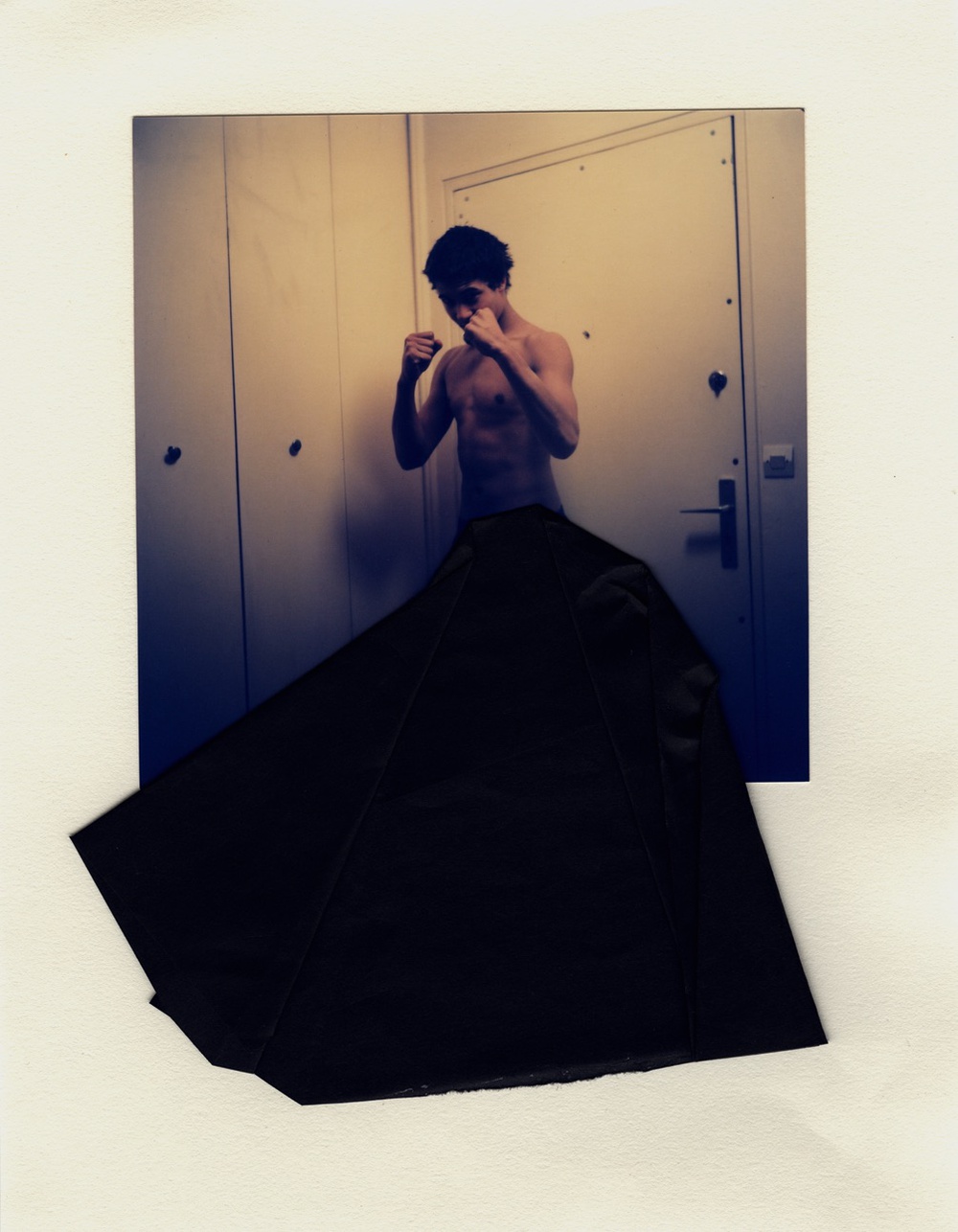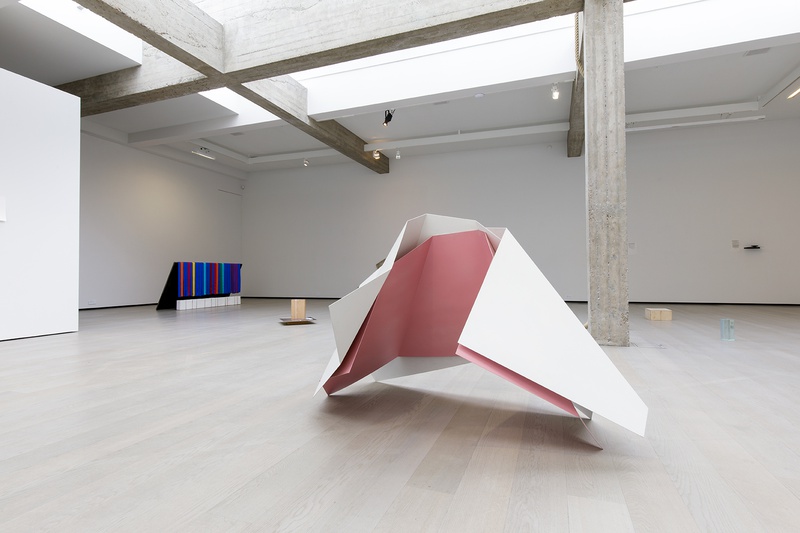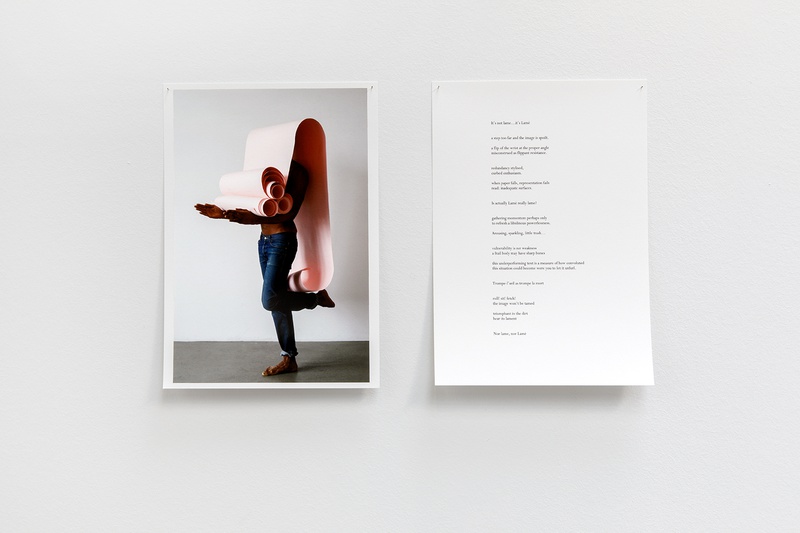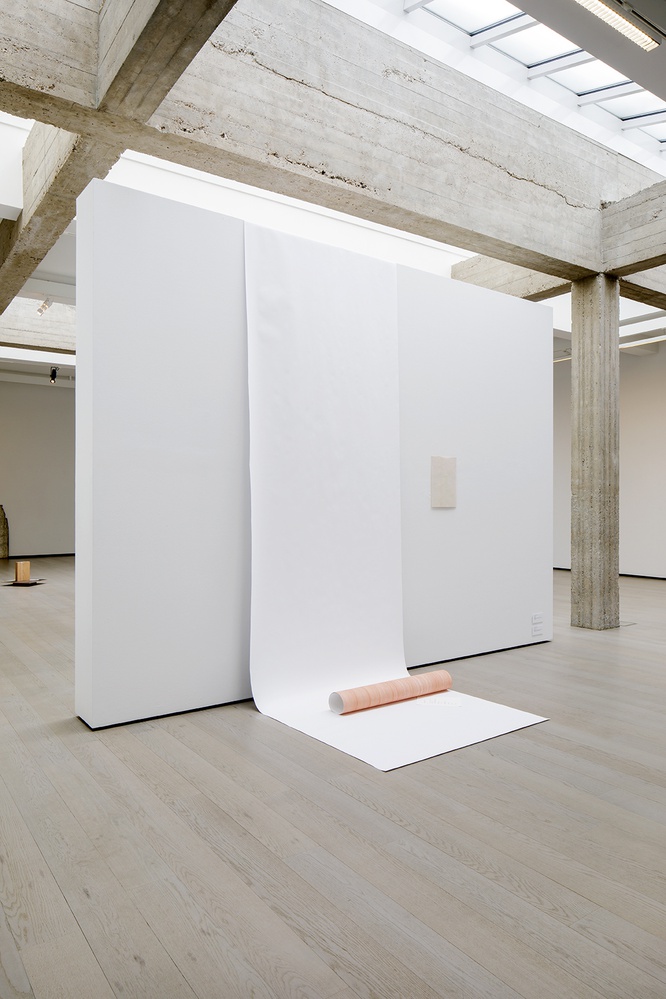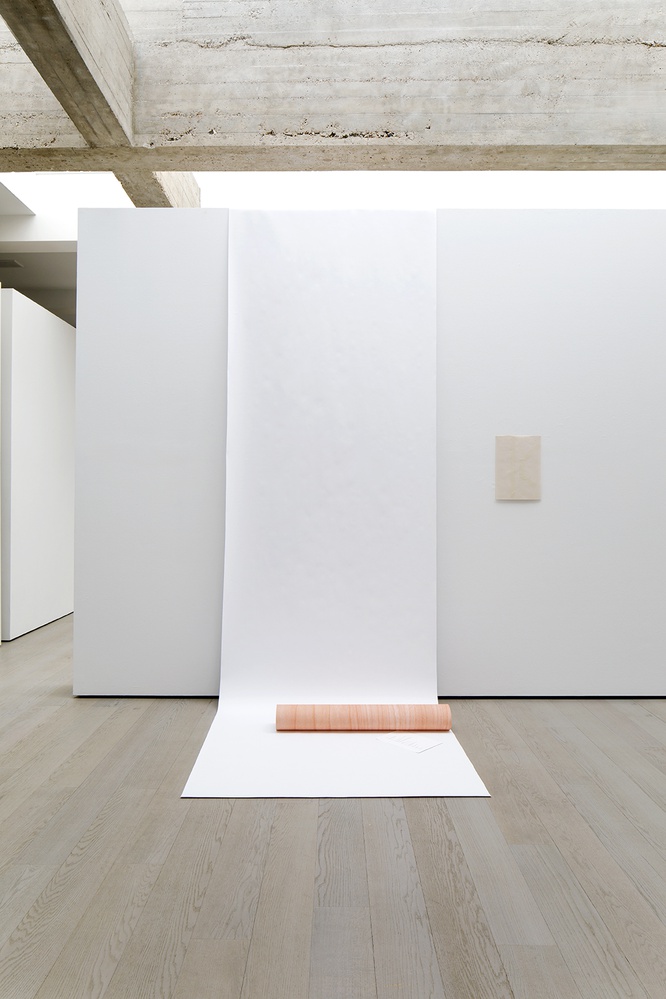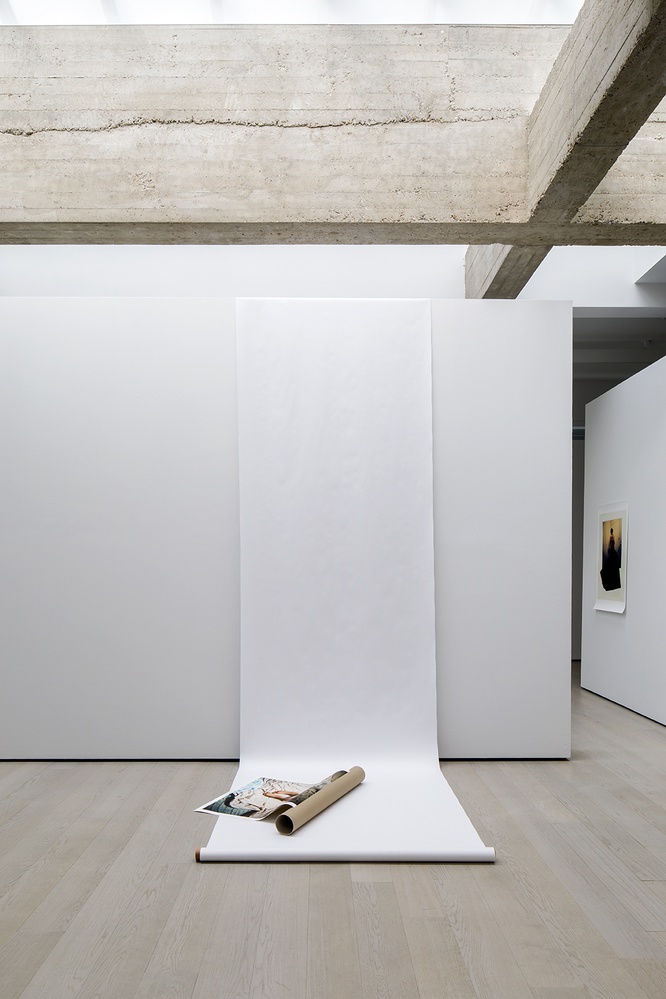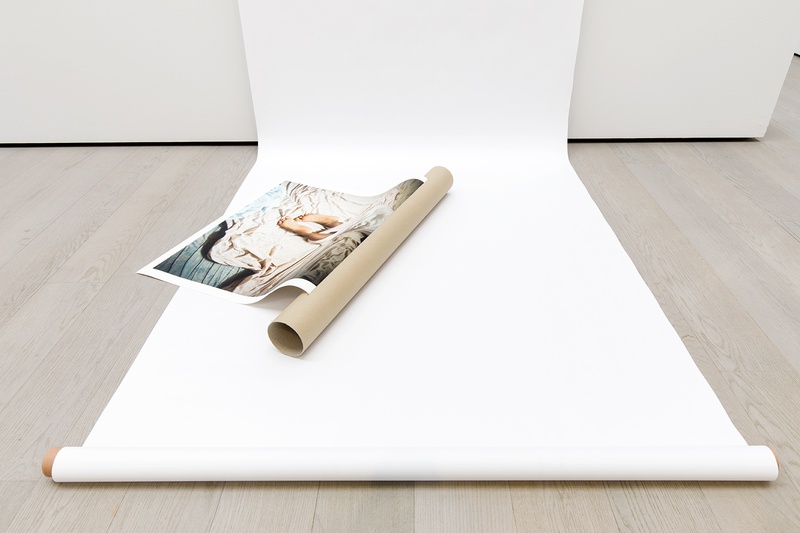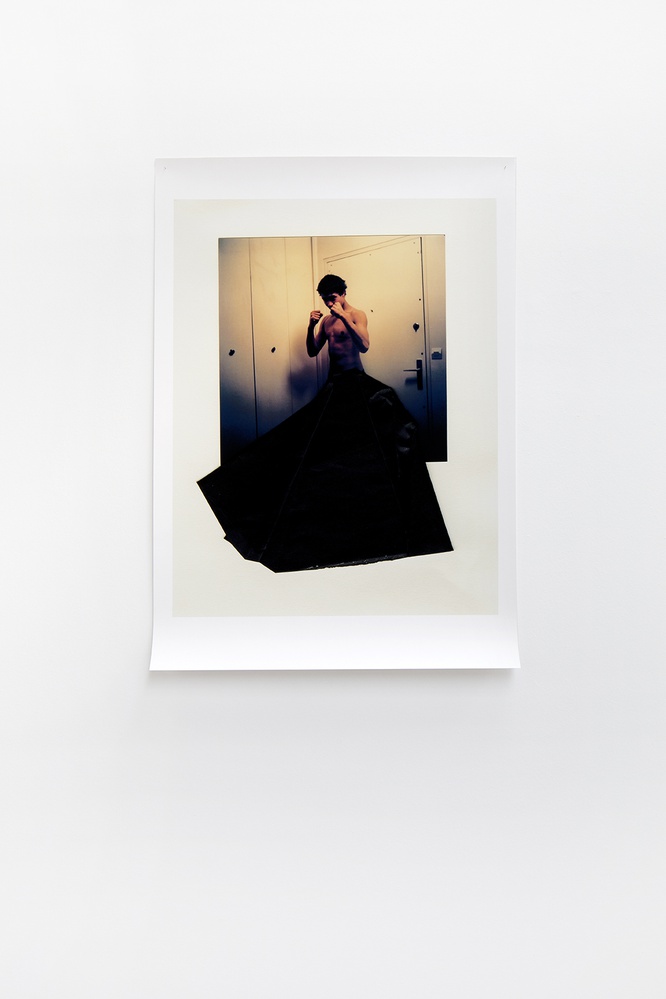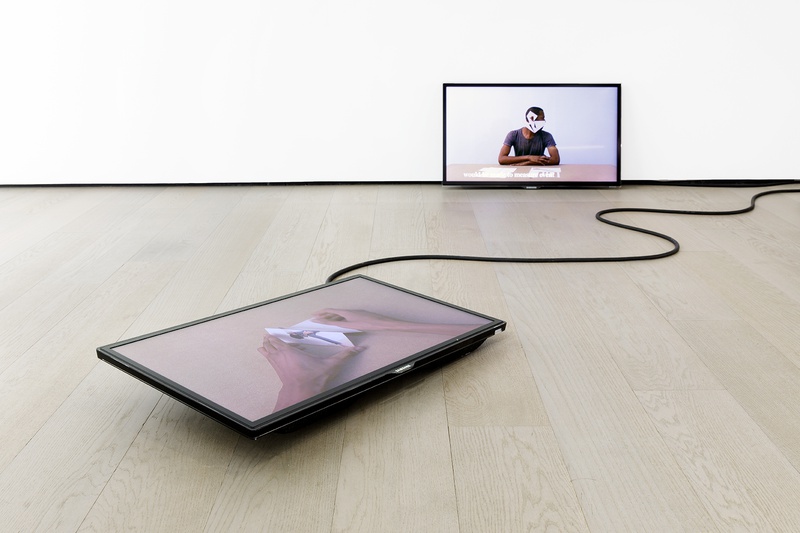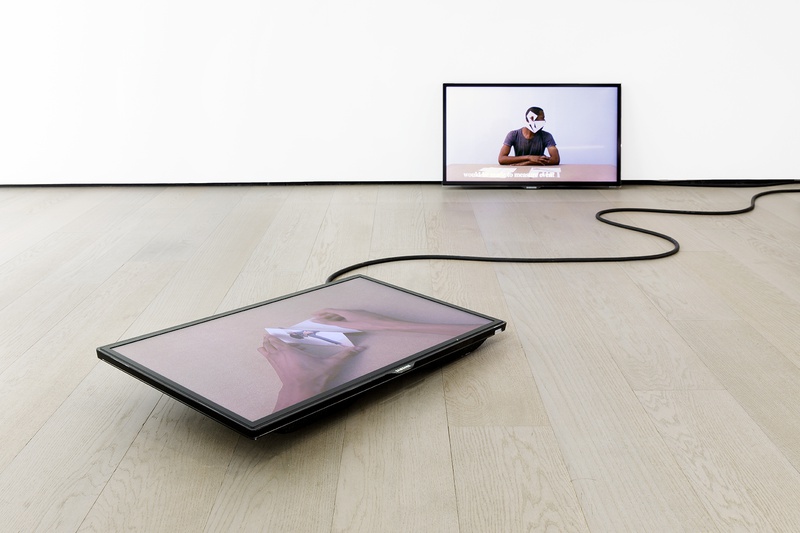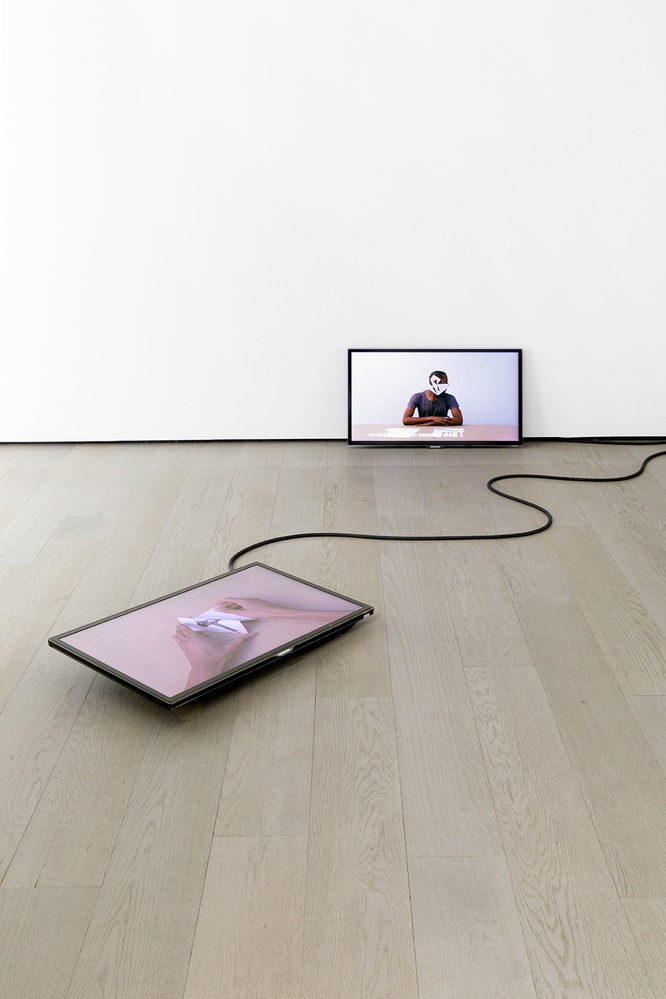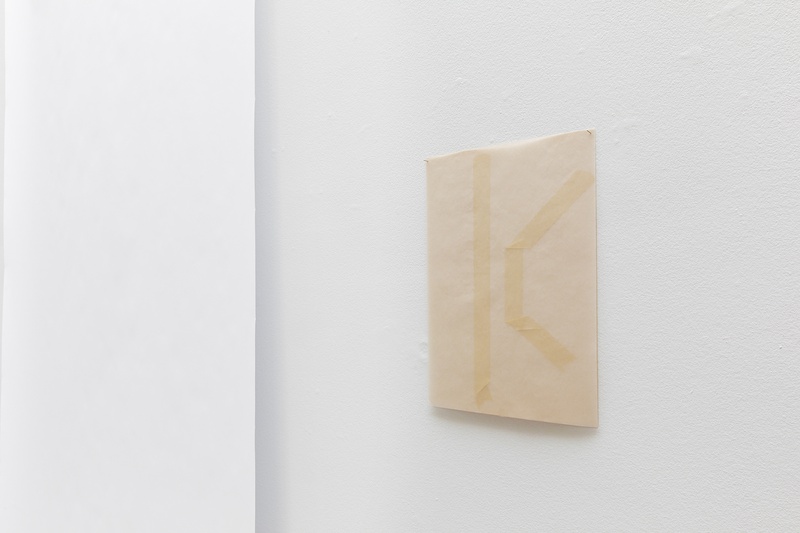The works of art by Jimmy Robert (Guadeloupe, 1973) are performances, photographs and sculptures such as videos and installations. The concepts of movement and physical bodies are a key theme. When combined, they create the typical lightness of Robert’s work from the perspective of gravity. Even his larger objects, such as the sculpture Metallica which is on display in this exhibition, do not look as heavy as they actually are. It’s almost as if the sculpture was not made out of aluminium but out of paper in stead. Another recurring element in Robert’s work is the use of simple and vulnerable materials such as paper and painter’s tape.
The themes in Robert’s work are identity, feminism and post-colonialism. He is often inspired by works of art, films or books by recent avant-garde artists who were not only pioneers in their various disciplines, but were also very skilful in subtly registering the traumas and impact of social circumstances. A few examples are Marguerite Duras, Jeff Wall, Sherrie Levine and Marcel Duchamp. Roberts often uses an existing painting or image as his starting point and then subtly and poetically works it out in more detail. Because of the themes he picks, his works of art never become downright political despite their original message to society that is often present in the work.
By adding layers of meaning to an existing painting or image Robert creates his own unique visual language. His works of art on paper usually begin with a photograph, a portrait from an art historical book, magazine or a private family photo album. In some cases, Robert also uses photographs that he has found. A unique characteristic of his work is that he first folds or tears the photograph, or puts tape or paper on it to create a kind of collage which he then scans digitally and prints out. On other occasions, Roberts takes new photographs in his studio and stores them in wooden crates or organises them on the floor of an exhibition gallery. Robert creates movement by using either of these two methods. This gives his work its sculptural nature.
This sculpture-like effect is also created because the prints are not framed and only attached to the wall with small pins at the top. After a while, the bottom part of the paper curls up and the print creates its own body, as it were. A third way in which Robert gives his work on paper a sculpture-like effect is by partly putting the prints in rolls on the floor and sometimes placing them over a poster tube. This makes the person in the portrait look as if he or she is moving across the floor.
Tubes are having a clear presence in Robert’s presentation. For instance a long roll of paper has been draped over a mobile wall on wheels. On each side of the wall it is held down by a sculpture made out paper, which consists of a tube. In Veneer (Cluj) (2016), a 3 foot wide photograph depicting the surface of a piece of beech plywood which amost has the feeling of a skin In the text that sits alongside the piece, Robert positions the work as “An image/object, A body/text, To be read, To be performed.” The text references Yvonne Rainer’s Trio A (1966) and No Manifesto (1965) stating that Rainer “made dances that she called ‘objects’ representing ‘work’. The work of Yvonne Rainer, who is one of the major founders of contemporary performance, has been of great importance for Jimmy Robert. The artist has incorparated various principles of Rainers work in his own practice. Each of Robert’s works subtly represents the vulnerable body. The works show how a body becomes an image of the social situation it experiences when it receives a subtle form of feedback.
The sculpture Metallica, which was also mentioned above, shows us how the many different works by Robert using a variety of materials and media are indeed connected to each other and to Roberts entire oeuvre. The sculpture for example, which also forms the basis for the performance with the same title, is itself based on the print that is on display in the exhibition: Untitled (Mickael). Robert seems to be critical of the classic distinction between masculinity and femininity in this print, the sculpture and the performance. What makes something masculine or feminine? Is there actually a difference between typical masculine and feminine characteristics? And if this is the case, shouldn’t we finally abandon this distinction? The print is also critical of the stereotypical idea that a black man is more masculine than a white man. Why would a black man be more masculine? Is he not allowed and can he not have equal measures of ‘feminine’ qualities like men with different skin colours?
In the videos at the exhibition Jimmy Robert deals with the power of language and movement. In a subtle way he shows that lanuage is also acting as a social construct and how seemingly natural movements that we are born with, such as dance, are limited by conceptual frameworks. In an indirect way, the artist shows that the ‘correct use of language’ and the ‘correct way of moving’ – or perhaps a lack of this – can have the effect that people either do or do not feel part of a community.
“In the video Paramètres Robert aims to fit cuttings from geometric drawings into the shape of his own face. During each of the ten attempts and movements he makes, he says a sentence he has written himself. Robert’s words are about language, parametres and text structures. They are about speaking and about the choreography of the body when doing so. The geometric drawings that Robert holds up one by one are two-dimensional images of 3D shapes. When cut out and held next to his face it is as if these drawings take on sculpture-like shapes, all the more emphasised by the artist’s carefully conducted movements.”
A choreography of movements also forms the basis for his video Untitled (Folding 2). Starting with a piece of white paper which lies down flat on a surface, we witness the folding of paper. This time we see Robert’s hands making origami shapes. Bit by bit and step by step, as in a jigsaw puzzle, the image on the other side becomes clear to us. There is an obvious underlying metaphor which is like a construction of the image and the image we have of ourselves, reflecting a more profound meditation on the objectification of the body, the body as a two-dimensional image and yet at the same time the materialisation of the video.
